Local stay with the San tribe/Bushmen – Experience the Living Museum of the Ju/’Hoansi-San – Namibia
In Namibia, you can experience the country in so many different ways. I stayed in the most luxurious places but also in the most local and somewhat frugal places. One of the highlights of my trip though was that of my local stay with the San tribe Ju/’Hoansi, formerly known as Bushmen.
Want to read more about my trip in Namibia? Then take a look at my Namibia page
San or Bushmen?
You’ve probably heard the name Bushmen more often than San. In fact, the tribe San used to be called Bushmen. Nowadays, they prefer not to use this name and prefer to hear themselves called San. This is therefore the name they use themselves. Yet you still read and see the word Bushmen in several places.
In this blog I will not use the name Bushmen I’ll use San.
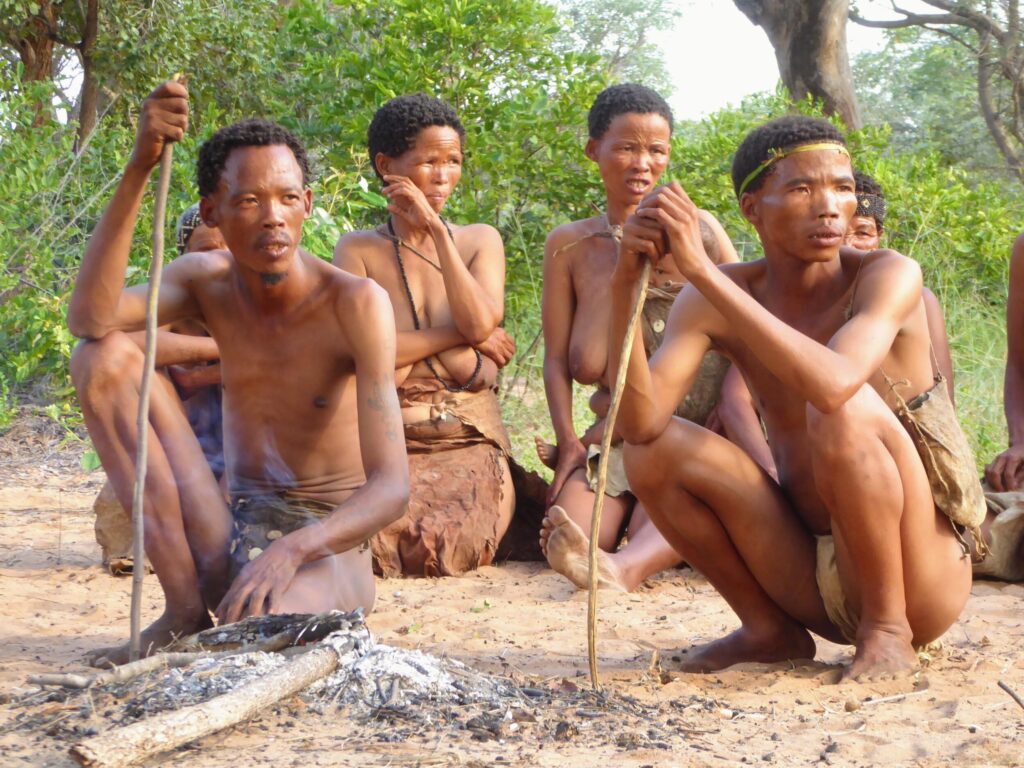
Local stay at the San tribe- Namibia
Travelling further down from Rundu, I went to a campsite near the San. On the way, I came across many Living Museum spots. It is an initiative subsidised by the government. It puts money back into preserving the culture of the ancient tribes, e.g. Herero, San and Himba. Happy!
When I was back from Namibia, I welded the book ‘I am Hendrik Witbooi‘. Did you know that the first genocide of the last century took place in Namibia and was committed by the Germans?
Experience the Living Museum of the Ju/’Hoansi-San – Namibia
How do I get to the Living Museum of the Ju/’Hoansi-San
From Rundu, I went to the Living Museum of the Ju/’Hoansi-San for a local stay with the San tribe. It was about 200 km and thus about a 3-hour drive. A beautiful drive through the Kalahari and with wide views and little traffic.
Along the road, you see the occasional people walking with groceries. The women artfully carrying it on their heads or the men dragging bags. Everywhere I see side roads that led to houses, beads? In the first edge, I see houses with some cattle walking around them. Some houses are as we know them, square with a roof, others are still round as they themselves have always lived. The beads are mostly trimmed with netting, no longer as they used to do with branches.
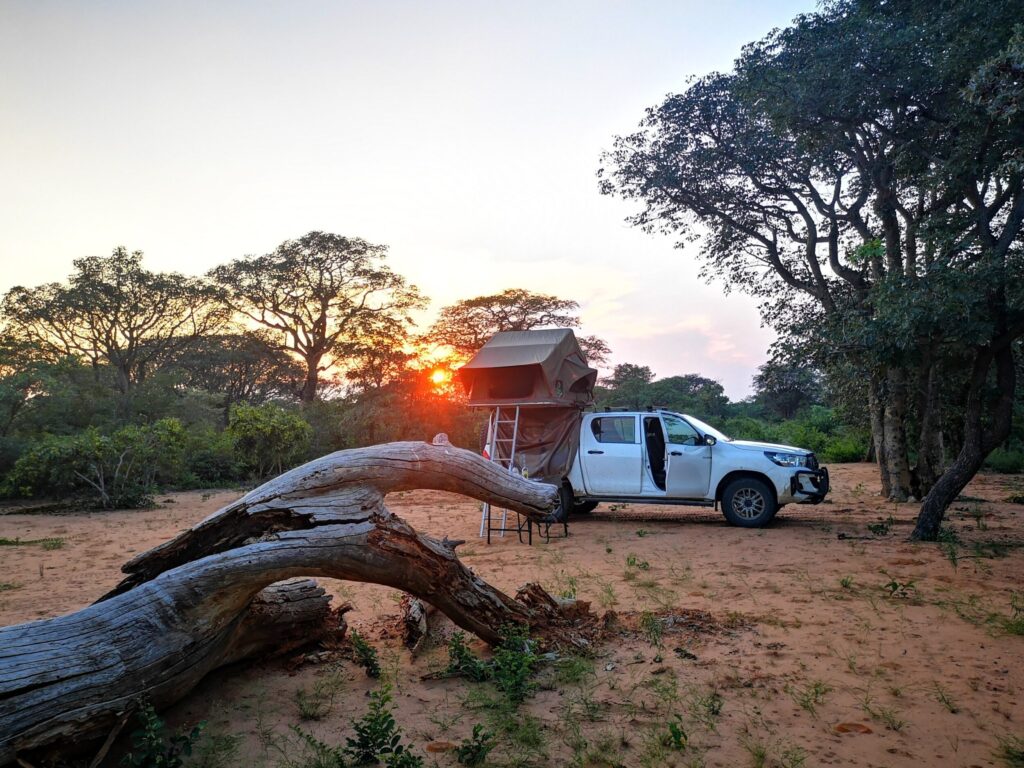
I am staying these days at Living Museum of the Ju/’Hoansi-San. It is located near the newer town of Grashoek. For the exact location, check out google GPS Living Museum of the Ju/’Hoansi-San.
What will you do and learn at the Living Museum in Namibia
There are many different living museums in Namibia that offer the same concept of staying locally with a tribe. It is a kind of campsite at their original village, or at the village where they still live to this day. They then offer a number of ‘excursions’ where you learn about San life. In this one, the village of Grashoek is the new place where the San live and the campsite near the old place. Where all the workshops and performances are also held.
More about the concept Living Museum.
There are living museums all over Namibia. Not only the San tribe has living museums where they take you into the traditions and culture of the San. The Ovahimba, Damara and Himba tribes, for example, are also happy to take you along. It is a successful project to combat poverty, preserve culture and encourage intercultural contact.
Read more about The Living Culture Foundation
Local stay at the tribe San / Bushmen
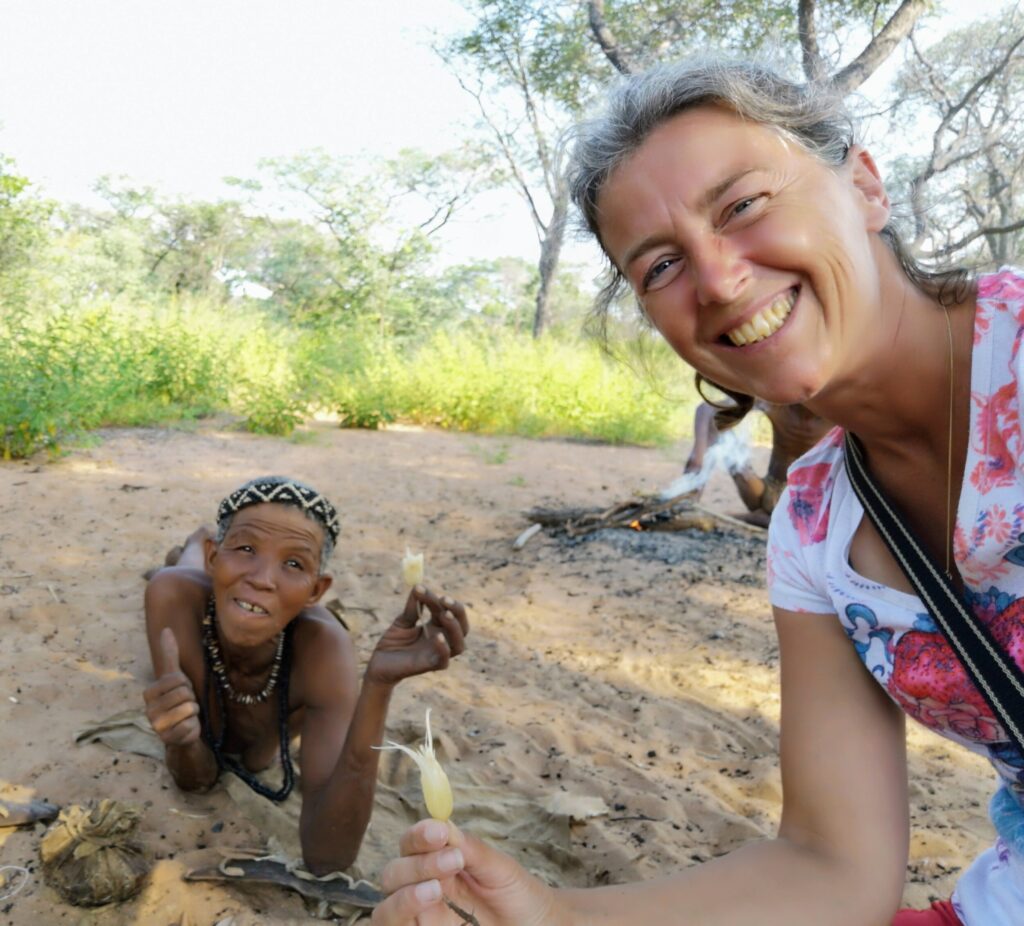
My experience at the Living Museum of the Ju/’Hoansi-San
I found it super interesting to spend two days locally with the San tribe. I booked some workshops and excursions in the old San village but also took a tour in the new village. This way you can really see the differences and have some conversations. I found it super educational and can recommend it to anyone.
Reception at the Museum of the Ju/’Hoansi-San
Reception at the Museum of the Ju/’Hoansi-SanI was very curious to see where I was going to end up that day. I had not turned down to a Living Museum on the road before. Now I would just spend 2 nights there. When my navigation indicated that I would turn into the last exit, I started to get a bit excited. What would I find … Would I really sleep with them in the village? Among their huts? Would we have dinner together?
When I saw a kind of dirt road roundabout at the end of the road, I had to look carefully to see what the intention was. I saw a sign with the words Reception. Under it, after I got out, I read that I should wait here and someone would come to help me. Looking around, I saw that I was at the edge of a ‘village’. I saw some little houses here and there, a shop of some sort, and in the distance I seemed to see a school building with a football pitch next to it. That football pitch I had no grass of course so in the middle of the Kalahari…
Local stay at the Tribe San / Bushmen
Stay at the Living Museum of the Ju/’Hoansi-San – Namibia
Before long, I was welcomed by a young man. He introduced himself as Elias and he indicated that he was my guide for the next few days. Elias explained that the new village was where we were now but that I would be staying at the campsite near the old village. Every day they would then join me to introduce me to the different culture-specific pastimes of the San, of the Ju/’Hoansi-San. He showed me a kind of menu from which I could choose. I read dance performance, forest walk, jewellery making etc.
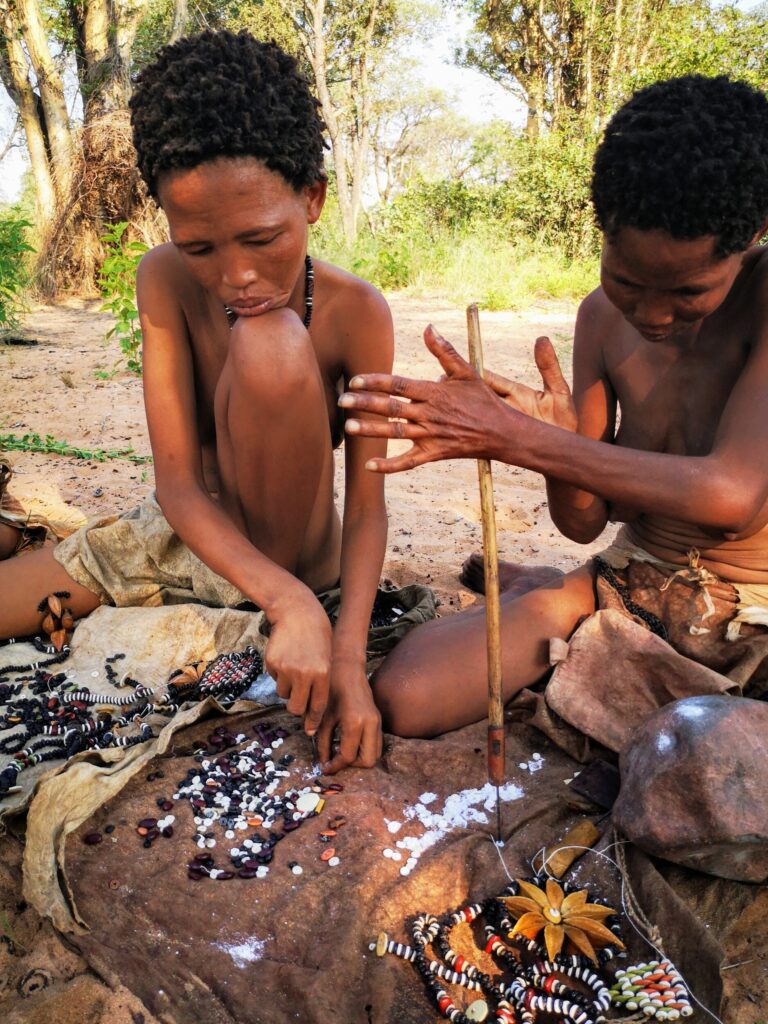
My campsite at the Ju/’Hoansi-San
I was allowed some time to think about that and he indicated that he would walk with me to the campsite. I drove behind him for a bit back along the road I had arrived on. A little way back, we took the turn to the left and there, among the bushes, were a number of campsites. It was very basic but good enough. There was no running water but I saw two cubicles on the campsite. One cubicle turned out to be the shower where a water bag would be hung later that day. The other cubicle was an eco-toilet.
Experience the Living Museum of the Ju/’Hoansi-San – Namibia
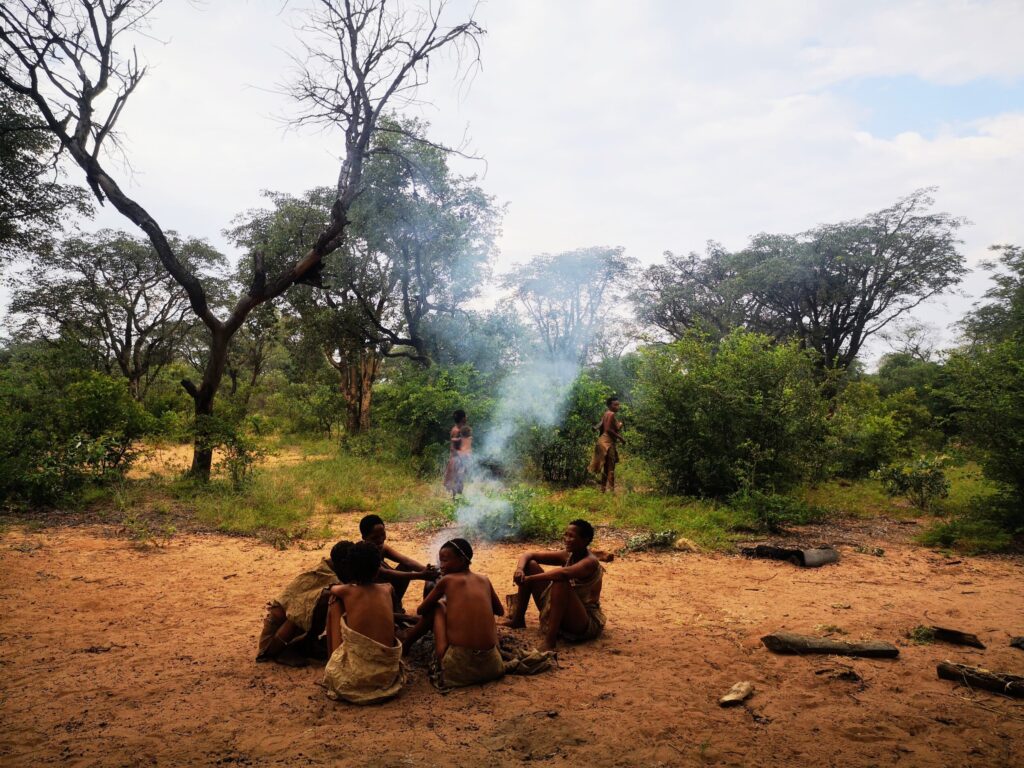
Preparation for your stay at the San
Unfortunately, I hadn’t quite prepared properly and it occurred to me that I didn’t have very much water left…. I still had some juice, and some spring water that I actually wanted to give away. So I asked my guide if I could buy some water from them. Silly question of course, of course they didn’t have any. They drank the water from the well that was struck but I could buy cola from them.
So if you go to a living museum make sure you have enough food and drink with you. A good water supply is especially handy. I did visit their own little supermarket later these days but there was little for me to buy there. This one was more focused on soft drinks: especially cola, alcohol, sweets and detergent.
- Cas is also important. Everything you buy there, the trips, souvenirs and possibly groceries, has to be paid in cash.
Arranging trips and experiences at the Ju/’Hoansi-San
I immediately discussed the next trips with him that first day. Jewellery making, cultural dance and game night, a bushwalk and also the walk through the new village. Fortunately, I had enough cash with me and could pay him right away.
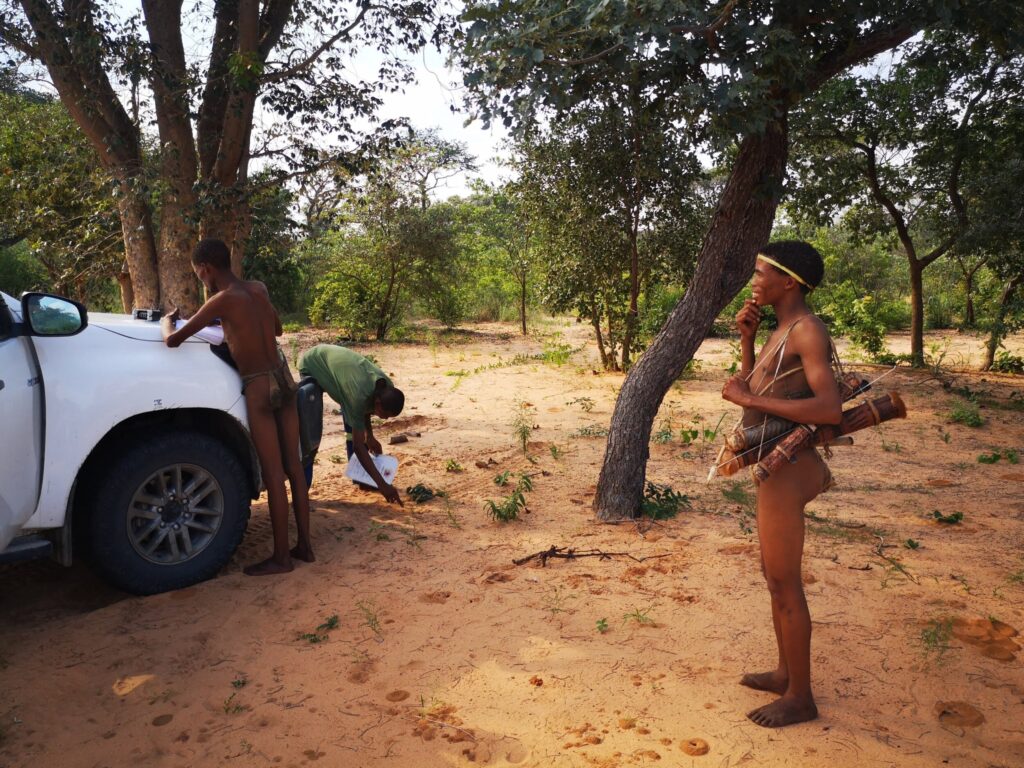
After this, the guide left me alone. I could go pitch my tent and explore the campsite a bit. There was another French family at the campsite at that time, so I was not alone. I parked the car properly so that I would sleep straight that night. The campsite had something like 5 camping spots and a central spot. There were all these sticks in the ground and an information board. The sticks in the ground, I would see later, were used by the San to hang their merchandise/souvenirs.
I spent the afternoon walking around a bit and reading my book. At the end of the afternoon, I suddenly saw all the San walking by. Here and there among the bushes they passed by, some crossing my campsite and others walking a little further away. They were all dressed traditionally now, just a small deerskin on as trousers or also hanging half over the upper body in the case of the women. Not much later, I was picked up. The dance and game night was to begin.
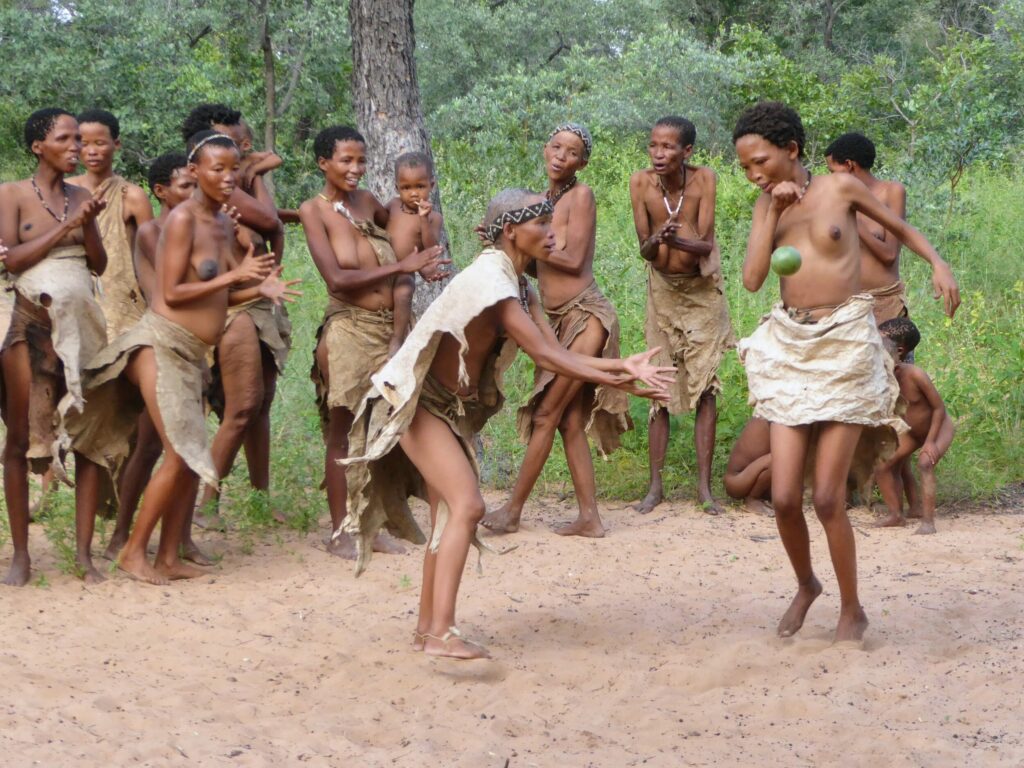
They started by showing a game they did in earlier times. The story behind this first game, according to Elias, was that the men had been hunting and wanted to sleep but the women were having fun and playing a game. The women tossed an unripe green fruit (monkey orange) very deftly. Between the women walked a man who chased the fruit, the women could throw it over quite a few times without the man catching the fruit. When the fruit fell to the ground, he was able to grab it and the game was over. The way this was done was very fun and playful to watch.
Play and Dance performance Ju/’Hoansi-San
After this, they showed a dance around a fire they had lit. This included singing and Elias explained to me what the dance was about. It depicted a story of a sick man putting a question to the ancestors, they then started singing, chanting and this could go on for a very long time. As long as it was not clear what the problem was they would continue chanting. This could go on like this all evening. I asked Elias whether they would go into a trance if they chanted for so long. This happened with the medicine man but not with the women, he said. If the medicine man went into a trance then he would have contact with the ancestors and thus find out which plant to use to cure the sick man.
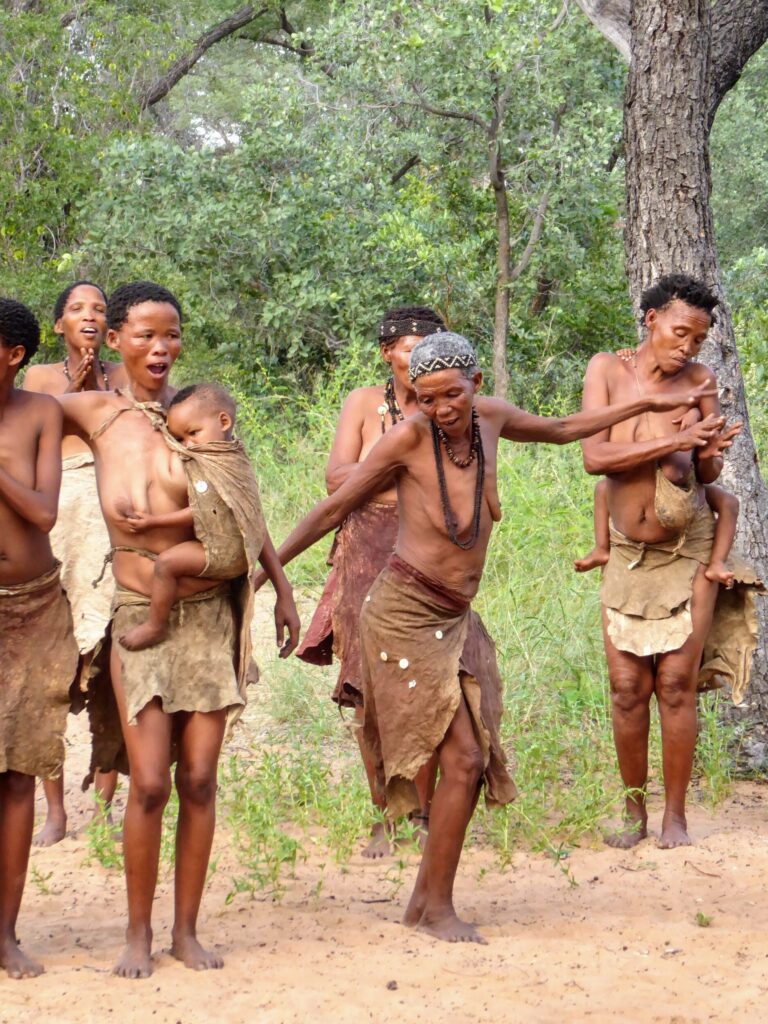
Entertainment during your local stay with the San tribe
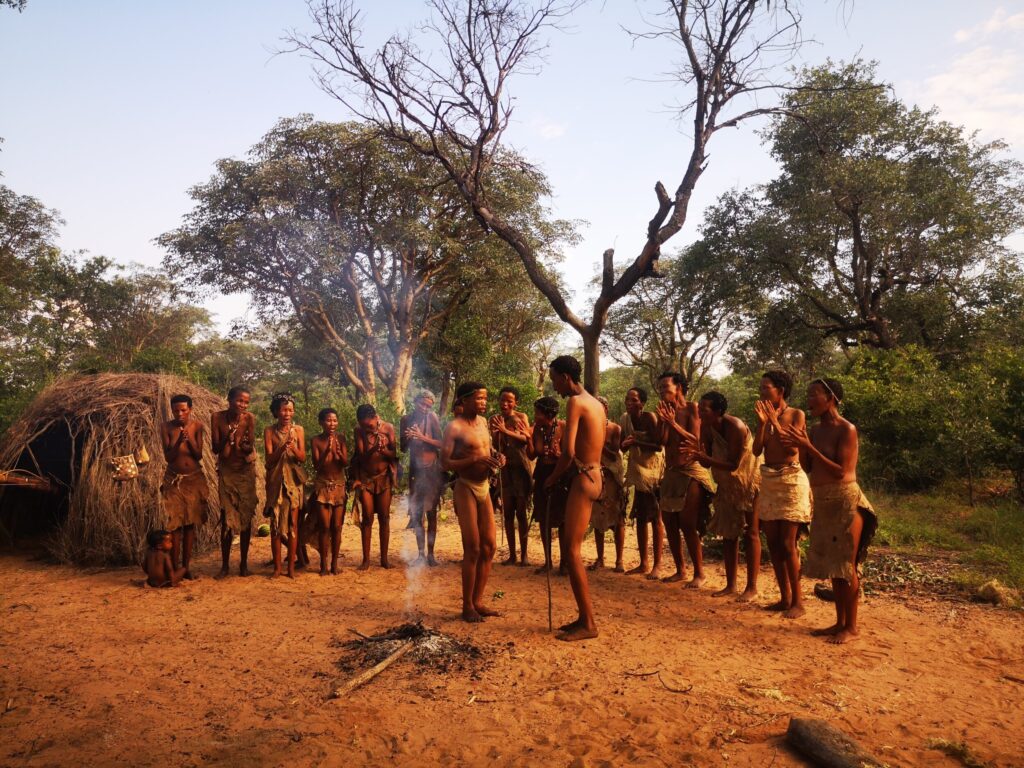
After the game and dance, there was some time to talk. Through Elias, I asked an elderly woman if she missed living in the bush. She had to think for a while but then said a resounding yes. She especially missed travelling around, they were now ‘stuck’ in a village. They used to go with the seasons to be where it was better for them. Now she had a fixed house where she therefore stayed all year.
Local stay at the San tribe – Namibia
Being ill at the campsite of the Ju/’Hoansi-San
That evening I made my dinner at the campsite. Before that, I used the older spring water I still had with me to boil the potatoes. I assumed it would boil to death and I dared. At least I would save the good water. I still had to pay for it that night in bed. It really didn’t go well, my stomach and intestines rumbled terribly and I had to climb out of my roof tent again and go to the toilet cubicle in the dark….
Once I got there, only a lot of air came out thankfully but the cramps persisted and were unbearable. So I took a tablet to calm my stomach/intestines. Loperamide is always a wonder drug for me and saved me again. After half an hour, it was over and I could relax again. How nice, right? After this, I soon fell asleep. Better get a big bottle of coca cola from the local supermarket tomorrow, then. Good against all the bacteria in my stomach….
That next morning I could enjoy another coffee – Hug in a Mug. Really good cup of coffee just made with boiled water. So ideal on Namibia’s campsites and also only available in Namibia.
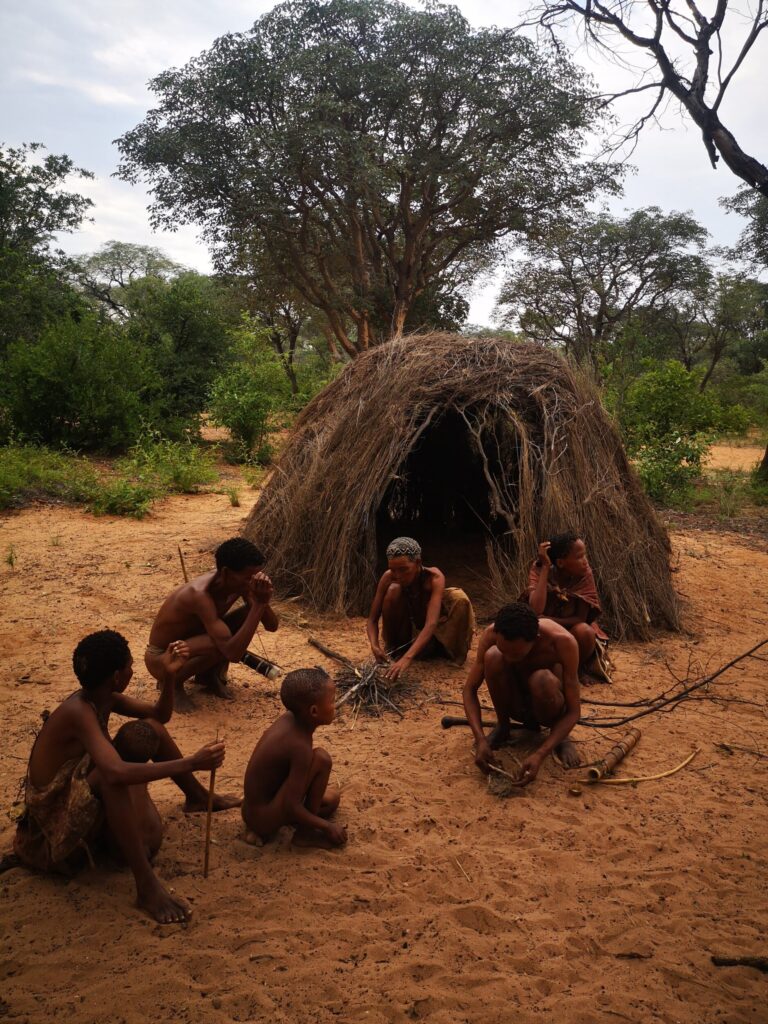
Bushwalk with the San
That morning, I had a bushwalk planned. I was picked up by Elias again and already saw a whole bunch standing around in original San costumes. Which is then just deerskin with some jewellery. They first showed me how they made fire and when it burned nicely, we went into the forest. Elias had his son and wife with him, and there was also another man walking along. That which the other man spoke only in their own language, so a click language (Khoisan language) was translated for me.
We had a lot of fun with that because they wanted me to learn some words, of course. But really, our tongue doesn’t cooperate and we can’t pronounce a word where suddenly a click emerges in the middle of the word. Try as you might, there comes a natural pause to restructure your mouth for a click.
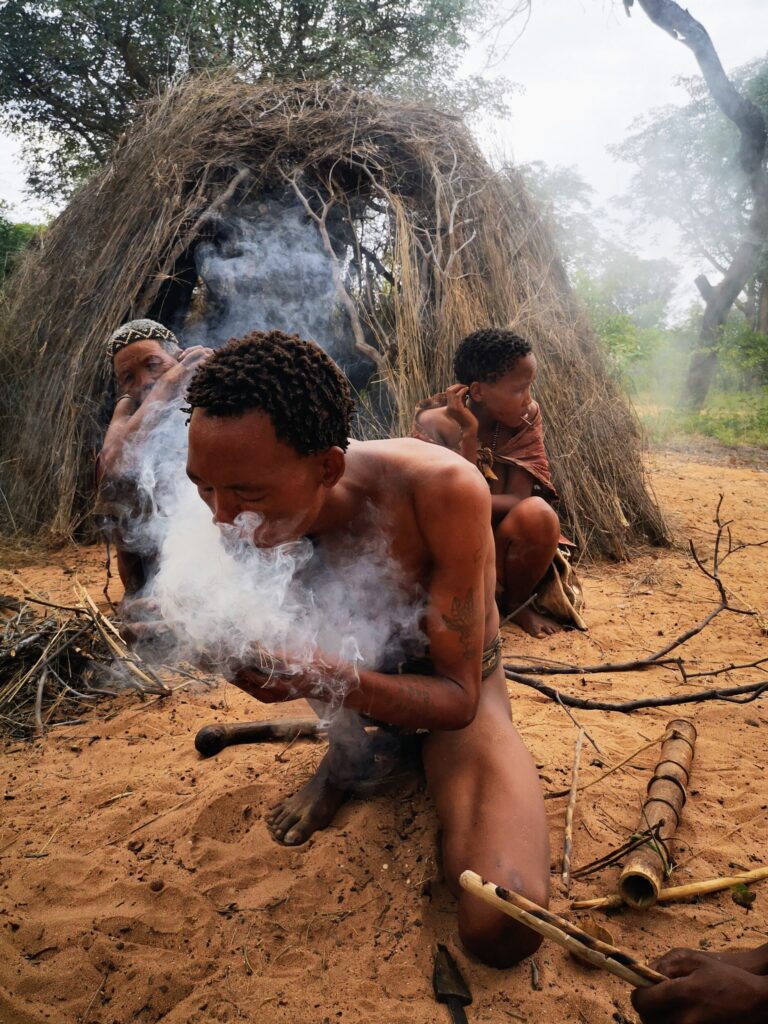
An educational bushwalk with the San in the Kalahari
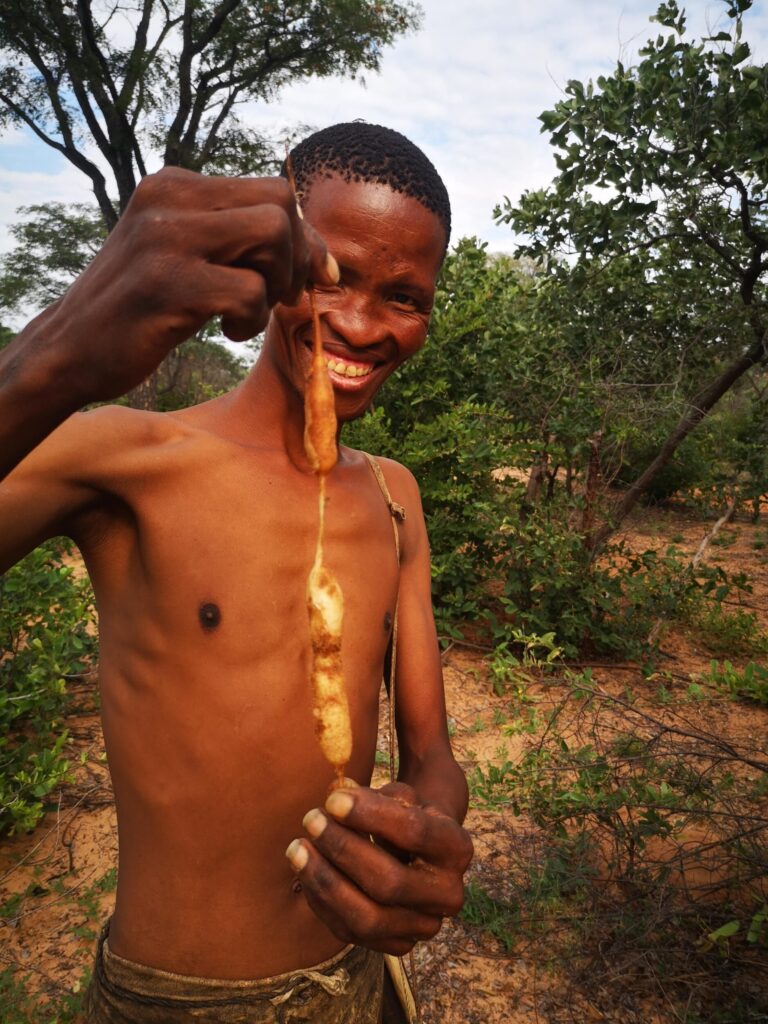
This man explained during the bushwalk which roots of shrubs/plants could be eaten. Women used to look for the edible roots and fruits to eat, the men were more the hunters. He also showed where to find water in times of drought. That was between two branches where a hollow had formed. With a grass straw, he could drink water from there.
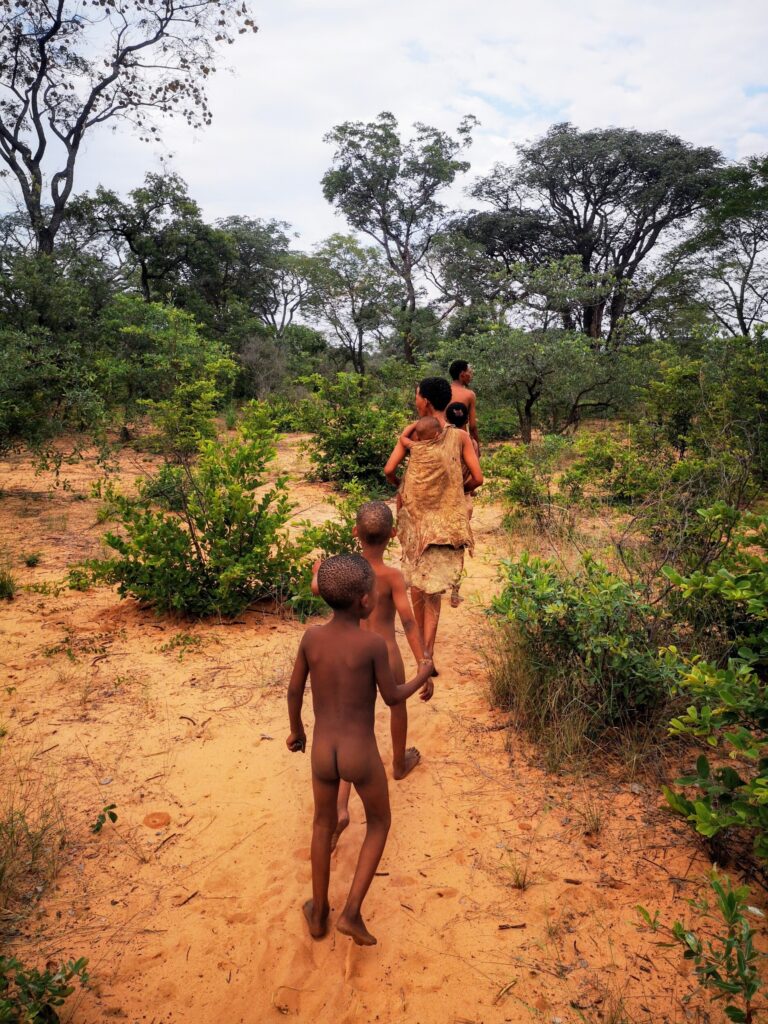
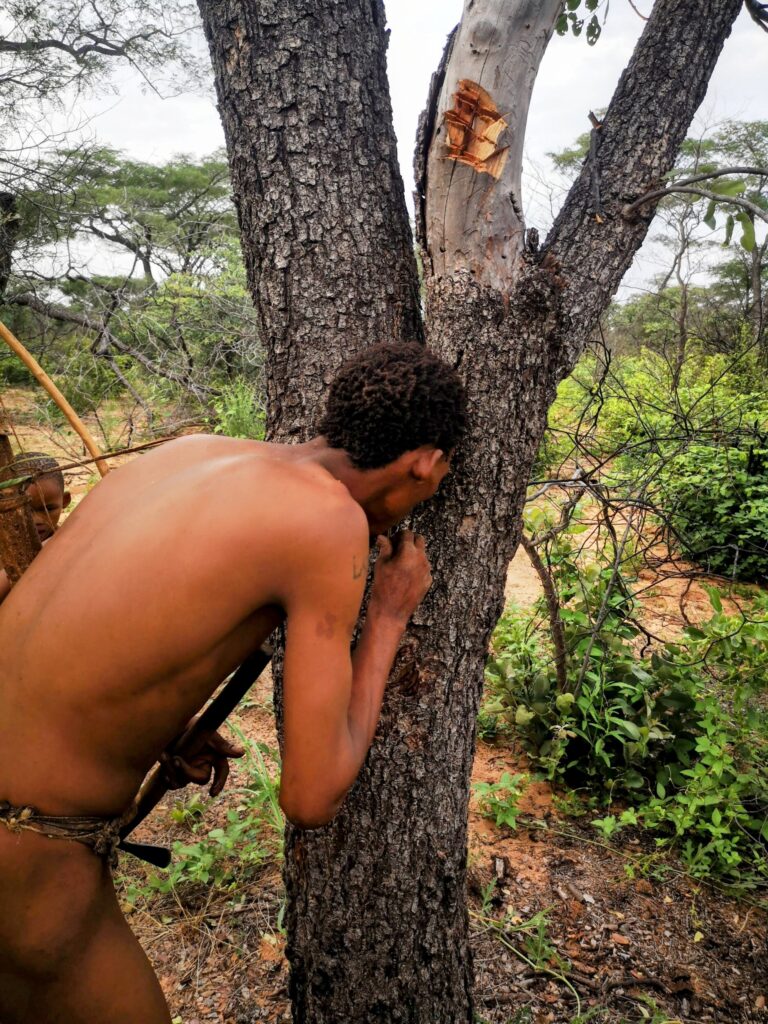
This was followed by showing how they tracked and shot an animal. Looking for tracks and then approaching slowly, with the small bow he had with him he could cover 25 to 30 metres. He also explained that this tracking and approaching of an animal could sometimes take a whole day or longer. But if they then had an animal, so to speak, half the village could eat it.
We also did a little bow-shooting competition. I won… not because I hit but because the man pulled too hard on the bow and it snapped. We got a big laugh out of it and it was a super end to the bushwalk this morning.
Also book a bushwalk with the San
Walk in the Village – New village Grashoek – of the San
After the bushwalk, I was allowed to walk right along to take the village walk in Grashoek. I could then get some coke and watch the football match right away. I could already hear screaming and shouting in the background. The various San villages in the area were having a football competition and today there was an important match and Elias was keen to see it too. So first, I stood on the sidelines for a while. I enjoyed seeing all the different people standing around. The old residents who didn’t care about the clothes they wore, but also the youth who stood there with a phone in their hands, wearing neat and clean clothes. Unfortunately, Grashoek lost the match….
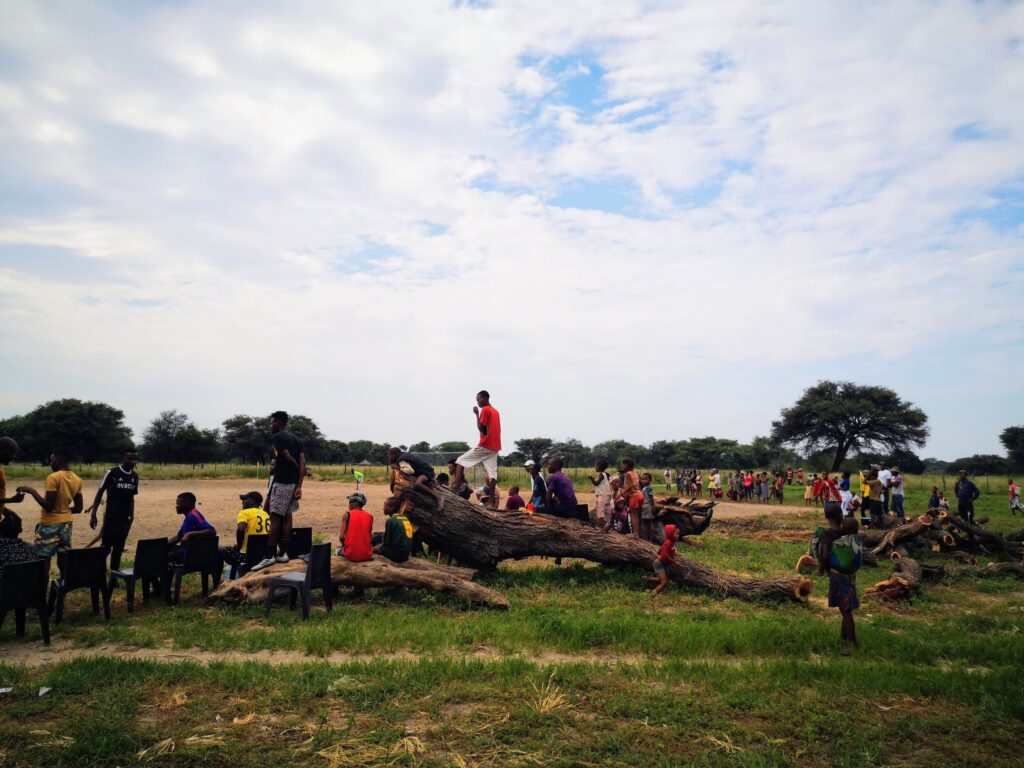
Walk throug Grashoek – Local stay at the San tribe
After this, we went further into the village. Near the football field was a school building, here the local children were taught. When they had to go to secondary school, they went to town. Then they stayed there all week and only came home on weekends. Their culture was also lost in this way, Elias indicated. To keep up in this society, they obviously have to. While walking, we passed a couple of huts, structures that I thought were about to collapse.
Nothing was further from the truth, the roof was indeed mostly cloth or sometimes a sheet of one thing or another but it worked fine. This was not old, this was how it was made, this was how it worked. I was introduced to Elias’ mother, she was busy pulling leaves off the branches. She used this leaf for soup or to dry so it would keep longer.
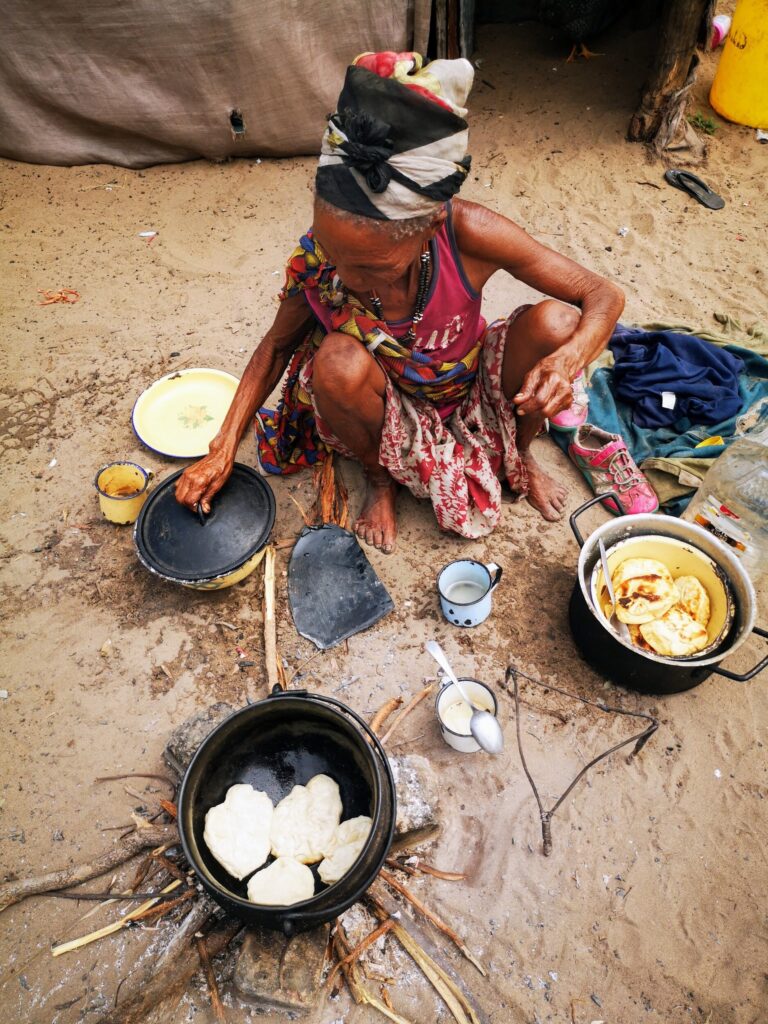
As we walked on, we came to another woman sitting in front of her cottage. She was making bread and I asked her where she got the flour. This they had bought in the area told Elias. She baked the bread in a pan with oil on an open fire. Children walked by and one she pulled onto her lap. The child, around 1 year old, was still wearing a thick jumper, while the sun was quite hot. This was quickly taken off by the woman.
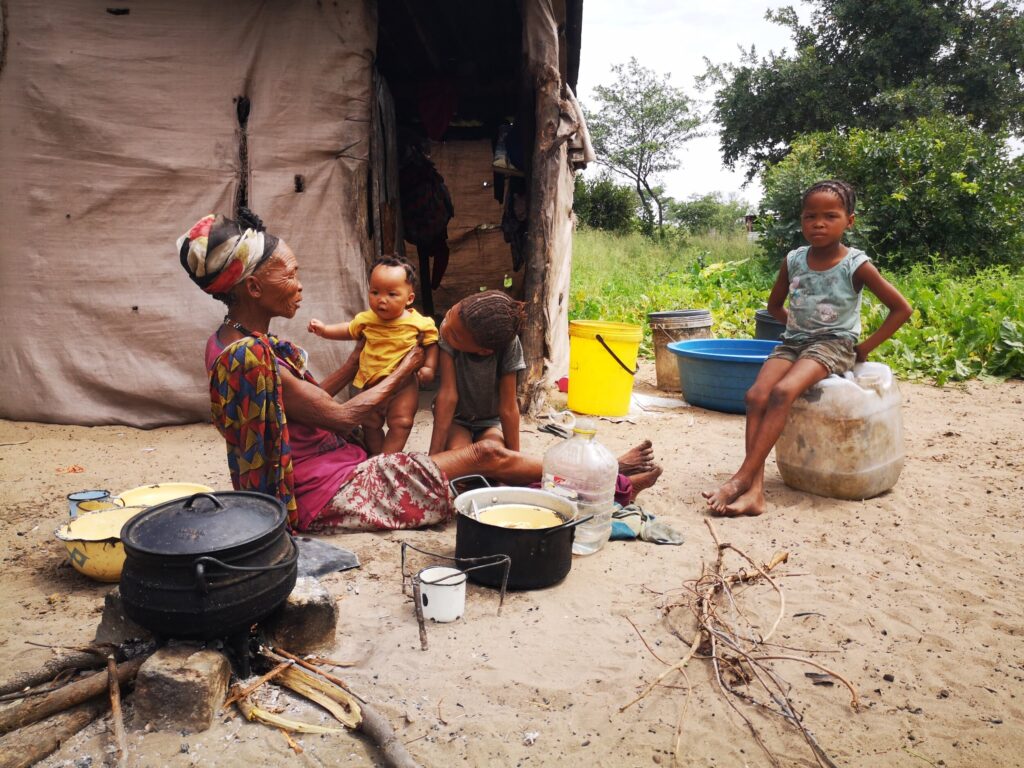
Making jewellery with the San
The last workshop I had booked during my local stay with the San tribe was jewellery making with the women that last evening. I was taken through the process of grinding the stones and seeds. Then threading on a sturdy wire, which used to be made of goat intestines but was now bought nylon thread. We were busy for an hour. Fun conversations and laughs among ourselves and in the end I went home with a necklace and matching bracelet. Fun nonetheless!
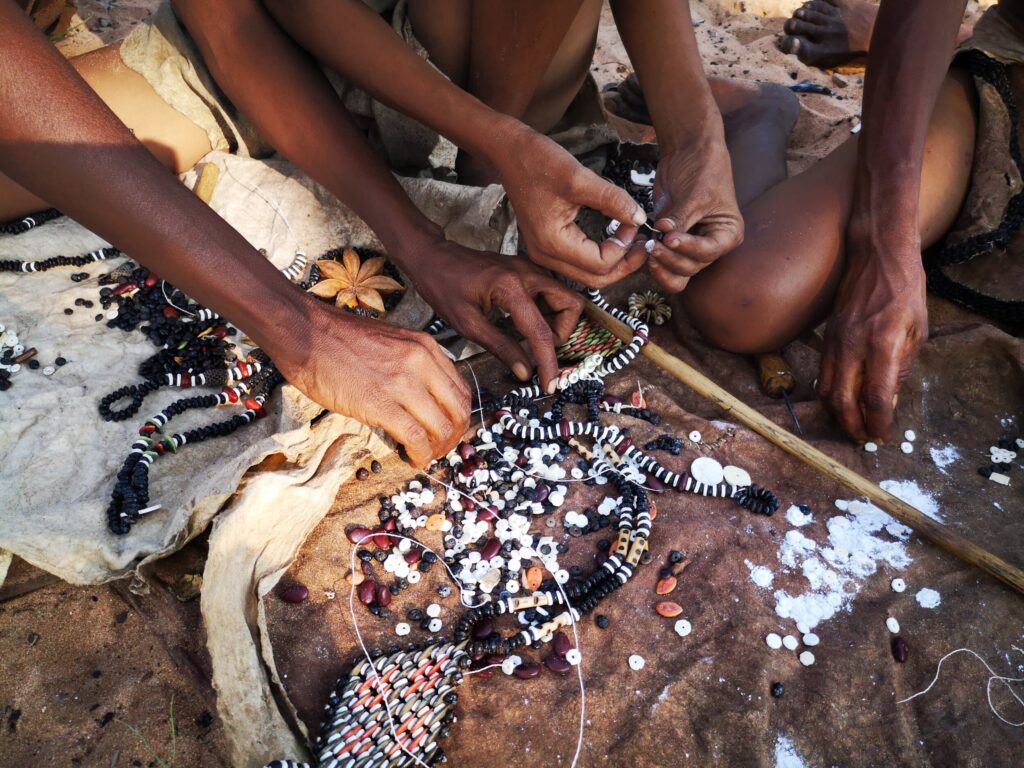
How does the San go to the toilet?
Plumbing for the San in Grashoek?
Since the cottages I had seen were all just 1-bedroom cottages, I wondered where they left their needs. When I asked this, Elias told me they just walked around the area. Did they have a fixed spot? No just wherever it was convenient. I didn’t go into it whether they then undercut it or anything like that but of course I wondered….
Close to school, a water well had been struck where water could be fetched for the whole village. The pump ran on diesel and this cost was also paid by the whole village. Income from the living museum was an important source of income. The souvenirs sold were from families themselves. The price tags also had a name and a price on them, so if something was sold then the proceeds went to the maker.
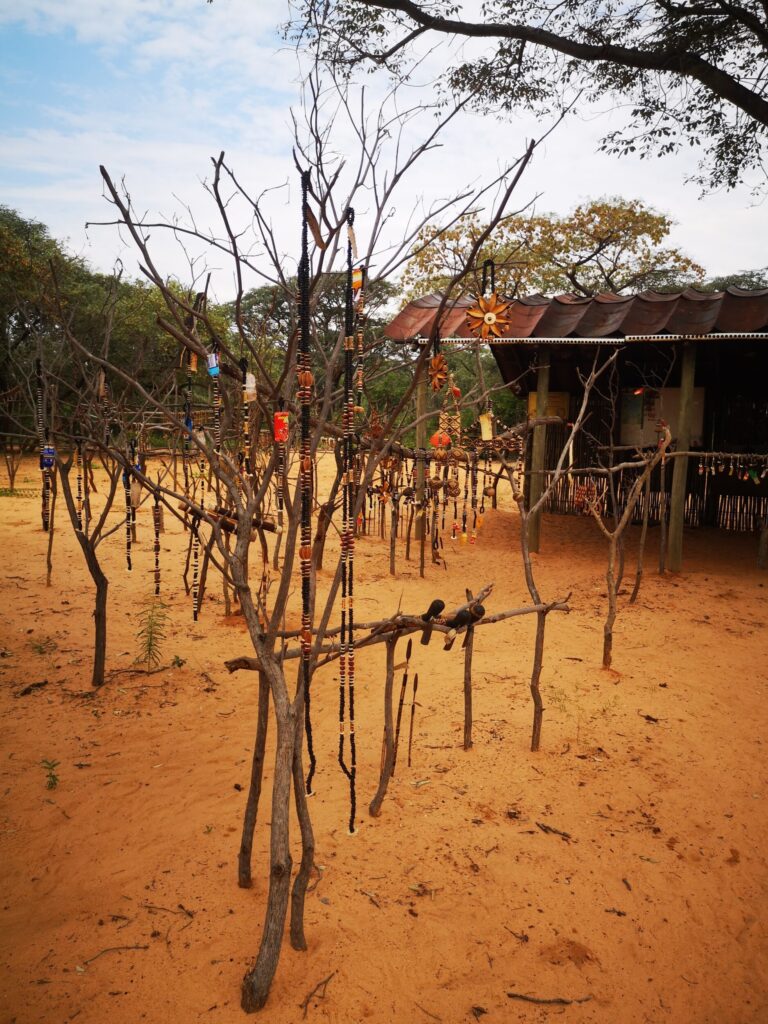
Questions I asked during my local stay with the San tribe
- Hunting licence..
Elias told me that they were now not allowed to hunt game. This was very unfortunate for them because this was partly their day job to survive. In Namibia, you can only hunt with a licence and they could not afford one. Namely, this would cost 600 to 1,000 Namibian Dollars (30 to 50 euros) for six months. Elias explained that he couldn’t afford that and so worked occasionally at a nearby farmer’s to earn some money so he could buy meat.
I asked Elias why they didn’t put some money together so that they could buy a licence. Then they could divide the proceeds among themselves and spend the remaining money they earned differently or spend their time differently. He hadn’t thought about it that way and he seemed to like the idea.
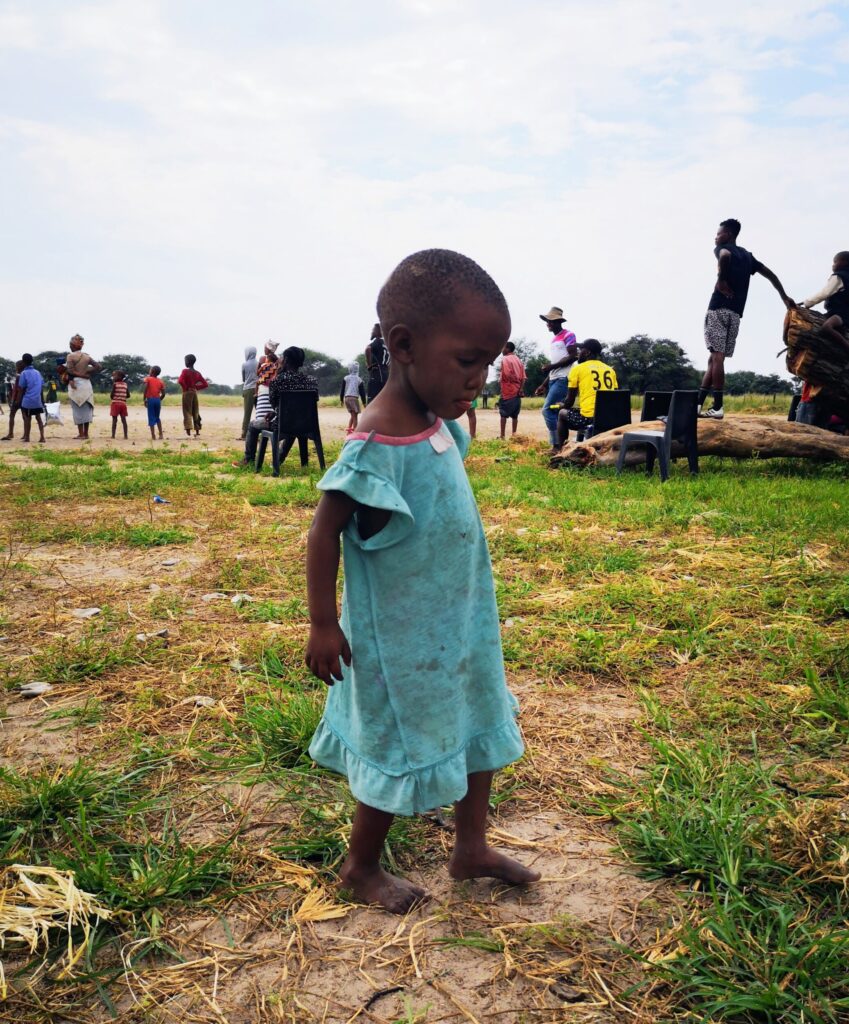
- Building a better house?
I also asked him about the pile of building stones I saw lying around the village. These had been donated by white people and of course they could build a wall, maybe two walls for a house, out of that. I asked Elias if he would use those products if given to him. No he wasn’t going to. “Why would he?” he asked me in return. So I explained that I looked at their houses, which looked ramshackle in my eyes, and thought, gosh a solid wall might be nice. He really saw it differently. In winter, they thickened their walls by smearing clay on them and over the roof they put thick cloths/cloths. These could easily come off in summer. So fine for winter and nice and fresh in summer. He didn’t see the problem.
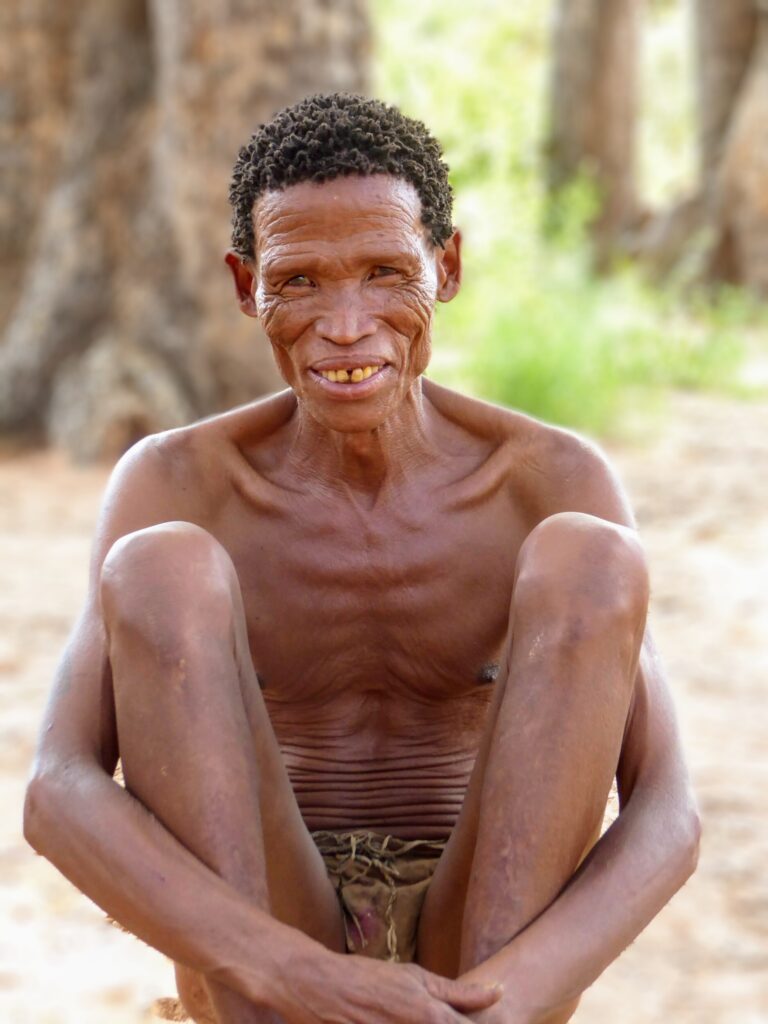
Of course, it was also really my way of thinking and living what I projected onto what I see. Exactly as we always do. Those stones were donated out of goodwill from someone who didn’t actually ask for them what they themselves wanted. In our part of the world, it is important that we have houses that are well-founded and keep warm in winter. Good walls is of great importance with us, not at all with the San.
Being satisfied is the most important thing in life, right?
Elias was perfectly content with how he lived and what he had. However, there were some things he would also like to have but still he couldn’t tell me that in a moment. He did notice that the youth who had access to the internet were very much in need of stuff, items to show off as well. This had nothing to do with living, surviving or having a good life. They, the youth, moved to the cities and came into contact with the internet, branded clothes and other external things that apparently mattered more than survival. Elias was still a young man but a bit more of the old school.
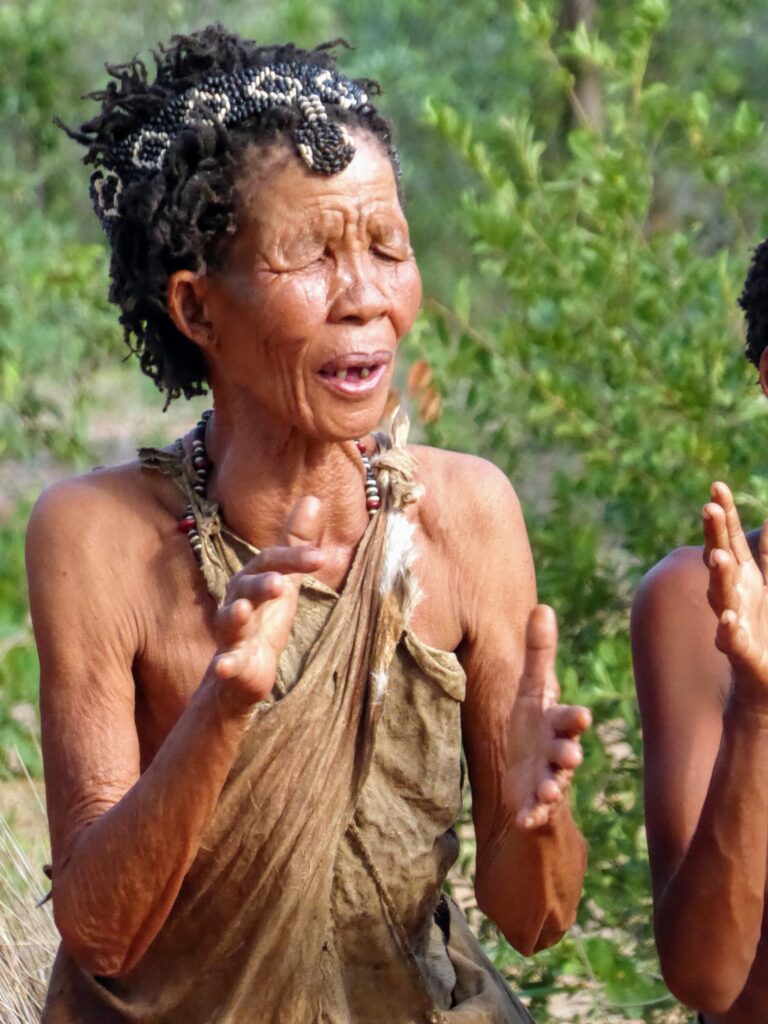
Reflections on my local stay at the San tribe
Why does everyone have to conform to our western standard? We think everyone should be able to have the same opportunities. But how do you think an equal opportunity when someone living in rural Africa .. has to travel 100 km to go to school. So then has to live in a hostel when he is a teenager to get an education. And in the process is taught from home that it is okay not to grow but to be happy with what you have and make ends meet.
So why do we still think we should try to make them feel the same way we do. It’s not my way, but just as they can’t fully understand me, I don’t have to fully understand them either. Nor would they be able to convince me that their way is the best way. On balance, people are a lot unhappier it often seems.
And so I also think, like the San, that you have to be satisfied with what you have. That we don’t always just need to improve, grow, etc. The world is depleting, our Western way of life is collapsing….
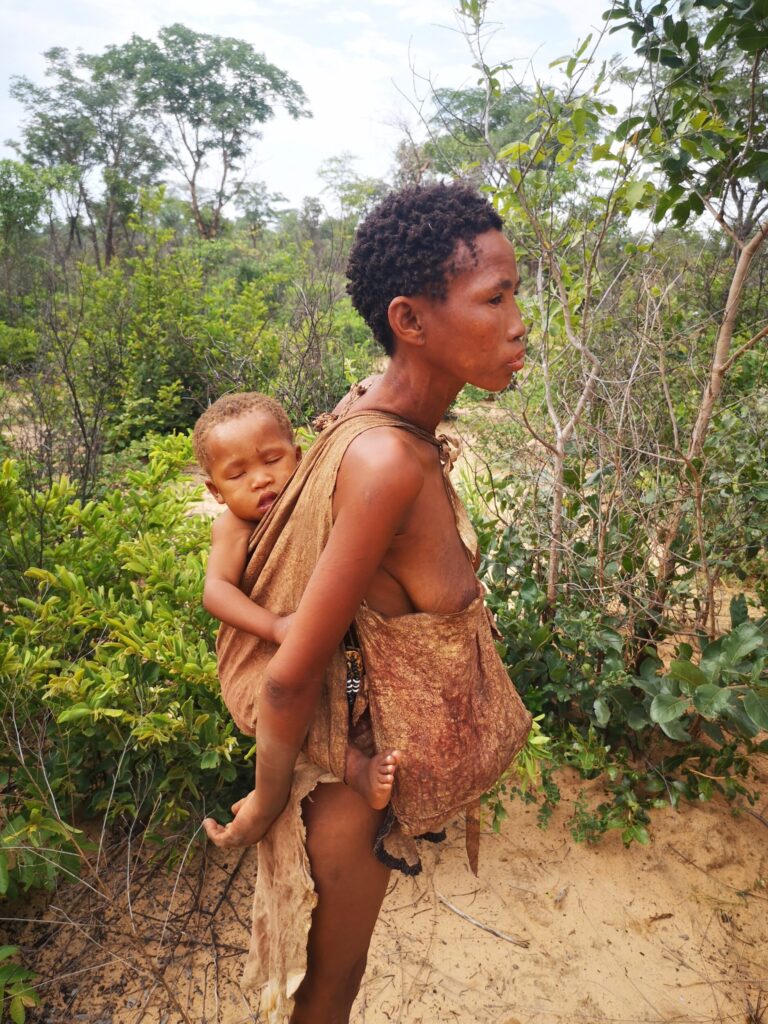
Coming & Going Grashoek Ju/’Hoansi-San
- Rundu – Grashoek 200 km
When I went to Grashoek, I came from Rundu. The trip is about 200 km and that takes about 3 hours. I had a wonderful time in Rundu, Divundu and Kwando. Also a great region to visit.
- Grashoek – Kalkveld 470 km
When I travelled on again, I went to Kalkveld – Mt Etjo for one night. This will take you a bit longer, as it is 470 km and will take you 5 hours of driving. Very interesting bit where you can visit a dinosaur footprint.
As it was a long journey and of course I ran out of groceries I made a stop in Otjiwarongo on the way…. That didn’t go very well I can tell you. After all, I was robbed there… Read how that turned out.
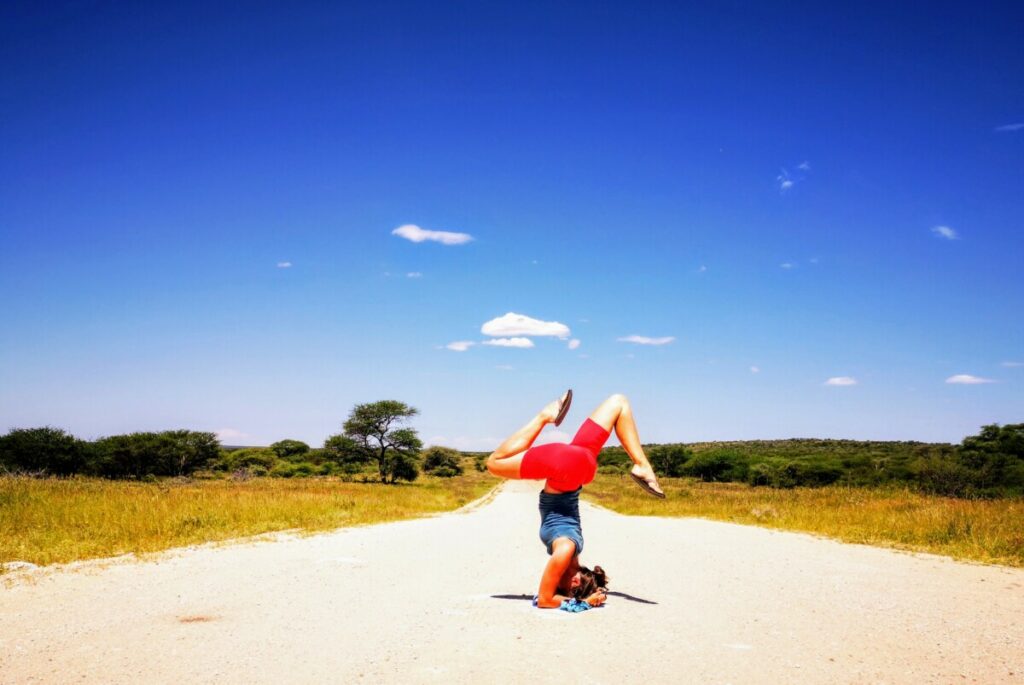
Will you also choose for a local stay with the San tribe (Bushmen) to learn more about the Ju/Hoansi?
Will you share this meaningful travel inspiration?

Want to read more about Namibia?
All you need to kow for your roadtrip by 4×4 in Namibia
Namibia’s most iconic spot – Visit Sossusvlei and Deadvlei
Rustic schipwrecks on the Skeleton Coast + Visiting Cape Cross
What to do in Rundu, Divundu en Kwando – Kavango Regio
Visit Kolmanskop, Luderitz and see the wild horses of Aus
Do also visit the Himba when you are travelling in Namibia
I hope you enjoy this beautiful world as much as I do

Jacomijn loves challenges: a pilgrimage, meditating for 10 days or slow travel. Her latest adventure? Setting up Zinvol Reizen and organising inspiring trips. Will you join her?






